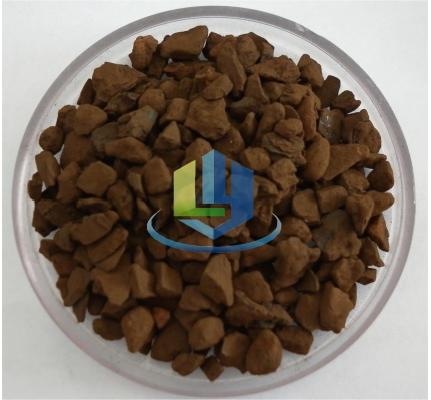What Is Manganese Sand
The manganese sand process for the removal of iron, manganese and hydrogen sulfide from groundwaters has been used since the 1950s in human. Today there are two distinct treatment processes associated with the use of manganese sand; specifically, the "IR" (intermittent regeneration) and the "CR" (continuous regeneration), both of which have become industry standards. In addition, manganese sand can, under certain conditions, remove manganese by catalytic oxidation.

Manganese sand is more correctly identified as glauconite, an iron, potassium, alumino-silicate material of marine origin. Manganese sand has been used since the 1920s originally as a natural zeolite for water softening due to its relatively high ion exchange capacity of approximately 3,000 grains/cu.
For iron and manganese removal the naturally occurring singular nodular grains of manganese sand are washed and classified to produce a filtration media having a sieve analysis of 18 x 60 mesh with a resulting effective size of 0.3-0.35 mm and a uniformity coefficient of 1.60 or less, giving the media excellent filtration characteristics. The manganese sand is stabilized, then coated with manganese oxide in various valence states. It is this coating that provides the manganese sand with its special chemical oxidation-reduction properties for the removal of iron and manganese as well as small quantities of hydrogen sulfide.
The advantages of the manganese sand process over aeration and filtration are single pumping (as the process generally employs pressure filtration), reliability, flexibility, and a high-quality effluent coupled with ease of operation. Both the CR and IR processes are relatively uncomplicated in both their design and operation and result in an efficient, reliable method for iron and manganese removal.
The mechanism for iron and manganese removal by manganese sand in the CR method is oxidation followed by physical removal of the resulting precipitates by filtration using a manganese sand or manganese greensand-anthracite bed. In the IR method, the manganese is removed by contact oxidation. Generally, the CR method is used where iron predominates with only small amounts of manganese, while the IR or catalytic oxidation process is used for water where manganese removal, with or without the presence of iron, is required.
